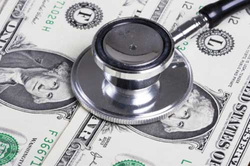
Sometimes the best journalism explains what’s right under our noses. In Steven Brill’s exhaustive Time magazine cover article “Bitter Pill: Why Medical Bills Are Killing Us,” it’s the staggeringly expensive, grotesquely inefficient and inhumane way Americans pay for medical care.
“In the U.S.,” Brill reminds us, “people spend almost 20 percent of the gross domestic product on health care, compared with about half that in most developed countries. Yet in every measurable way, the results our health care system produces are no better and often worse than the outcomes in those countries.”
“In the U.S.,” Brill reminds us, “people spend almost 20 percent of the gross domestic product on health care, compared with about half that in most developed countries. Yet in every measurable way, the results our health care system produces are no better and often worse than the outcomes in those countries.”
Obamacare or no Obamacare, ever-increasing prices show few signs of abating. For all the fear and uncertainty the president’s health insurance reform will eliminate from people’s lives, it’s almost incidental to the overall question of costs.
Moreover, had the law attempted to seriously restrain profiteering hospital chains, pharmaceutical companies and medical equipment manufacturers that Brill depicts as largely responsible for the current morass, there’s no way it could have passed.
Yes, it’s a fiscal issue. If Medicaid and Medicare paid the same amounts for health care as, say, Switzerland or France—the economist Dean Baker has repeatedly pointed out—the Federal budget deficit would virtually disappear. (Although the two federal programs are infinitely more frugal and efficient than the rest of the system.)
But it’s an economic and moral issue as well. Brill was inspired to research the article after noticing the gleaming spires of the Texas Medical Center in Houston, of which M.D. Anderson is the brand name. It’s a great hospital, dispensing world-class care (at world-class prices). But how exactly, Brill wondered, had hospitals become five of Houston’s 10 largest employers? It’s a pattern repeated nationwide, as hospital chains have come to dominate local economies.
Essentially, he found, by gaming what the article describes as “the ultimate seller’s market”—an economic realm where buyers (i.e. hospital patients) are normally ignorant, often frightened and sometimes literally helpless. And who often think they’ve got adequate insurance, until they examine the fine print.
Granted, nobody bargains over a cancer diagnosis or heart attack. Even so, Brill wondered “why should a trip to the emergency room for chest pains that turn out to be indigestion bring a bill that can exceed the cost of a semester of college? What makes a single dose of even the most wonderful wonder drug cost thousands of dollars? Why does simple lab work done during a few days in a hospital cost more than a car?”
Perhaps the time has come for our legislators to care about the general public and not hospitals and the bonuses of the members of the board.
Moreover, had the law attempted to seriously restrain profiteering hospital chains, pharmaceutical companies and medical equipment manufacturers that Brill depicts as largely responsible for the current morass, there’s no way it could have passed.
Yes, it’s a fiscal issue. If Medicaid and Medicare paid the same amounts for health care as, say, Switzerland or France—the economist Dean Baker has repeatedly pointed out—the Federal budget deficit would virtually disappear. (Although the two federal programs are infinitely more frugal and efficient than the rest of the system.)
But it’s an economic and moral issue as well. Brill was inspired to research the article after noticing the gleaming spires of the Texas Medical Center in Houston, of which M.D. Anderson is the brand name. It’s a great hospital, dispensing world-class care (at world-class prices). But how exactly, Brill wondered, had hospitals become five of Houston’s 10 largest employers? It’s a pattern repeated nationwide, as hospital chains have come to dominate local economies.
Essentially, he found, by gaming what the article describes as “the ultimate seller’s market”—an economic realm where buyers (i.e. hospital patients) are normally ignorant, often frightened and sometimes literally helpless. And who often think they’ve got adequate insurance, until they examine the fine print.
Granted, nobody bargains over a cancer diagnosis or heart attack. Even so, Brill wondered “why should a trip to the emergency room for chest pains that turn out to be indigestion bring a bill that can exceed the cost of a semester of college? What makes a single dose of even the most wonderful wonder drug cost thousands of dollars? Why does simple lab work done during a few days in a hospital cost more than a car?”
Perhaps the time has come for our legislators to care about the general public and not hospitals and the bonuses of the members of the board.
 RSS Feed
RSS Feed